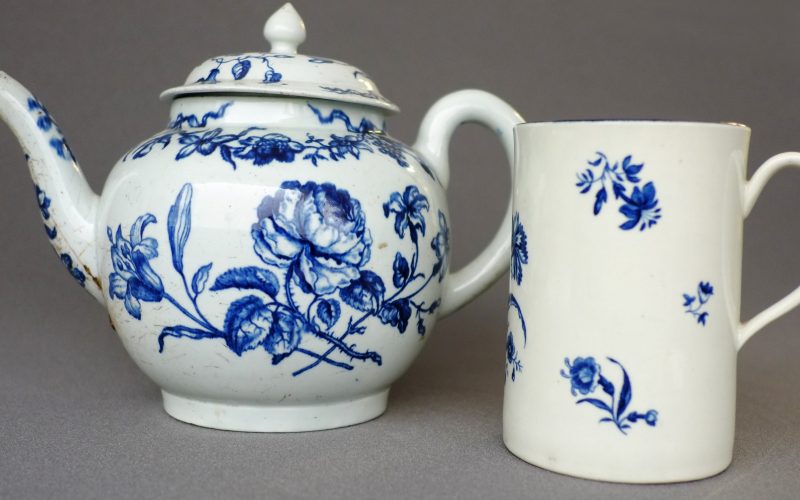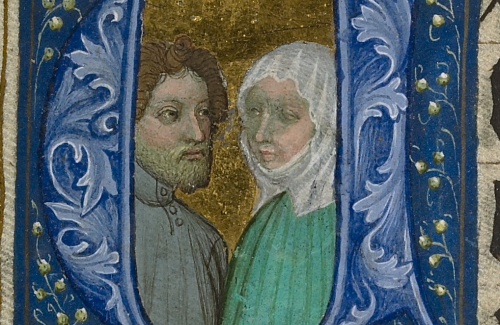#32 Teapot
These items are ones that perhaps we don’t appreciate properly, due to their association with Samuel Johnson. But we think they’re pretty enough to be included in this list.
1. This teapot and mug were manufactured by ‘The Worcester Tonquin Manufacture’ who would go on to become Royal Worcester. They produced the best blue and white porcelain tea-ware available at the time.
2. The pattern on the mug is the Gilliflower print, which is an old word for carnations. The pattern is derived from French patterned china, primarily Chantilly.
3. Both patterns date from the mid-18th century.
4. The teapot holds two quarts (4 pints)
5. The teapot was puchased Christmas 1884 by Pembroke Fellow, Alfred Thomas Barton, from Sarah Anne Parker, whose grandmother, Charlotte Parker, was acquainted with Johnson through their mutual friend, Jane Gastrell
6. Charlotte Parker’s husband, Samuel, was a student at Pembroke (m.1823). He also gave us Johnson’s essays and some of his letters, which are now in the College archive.
7. Sarah Parker initially wrote to Edward Tylor, Keeper of the Natural History Museum, about the teapot. He passed the letter to Henry Chandler, whose book we looked at yesterday. Chandler then passed the letter on to Alfred Barton.
8. The mug contains a note from 1858, stating that it was found in Thomas Wharton’s rooms in Kettel Hall, Trinity College, where Warton was a Fellow, 1750-1790.
9. “The note inside the mug reads:
“This mug originally belonging to the master of Kettle Hall was used for gruel by Dr Johnson during his visits there. It then came into the possession of Mrs. Collins who had seen it used by Dr. Johnson. Mrs. Collins gave it to Mrs. Hester. Mrs. Hester presented it to her nephew Mr. Hester Town Clerk of Oxford, from whom the Master of Pemb: Coll: received it Oct 28: 1858”
10. Johnson declared himself to be a “hardened and shameless tea-drinker who has, for twenty years, diluted his meals with only the infusion of this fascinating plant, whose kettle has scarcely time to cool, who, with Tea, amuses the evening, with Tea solaces the midnight, and with Tea welcomes the morning.”

